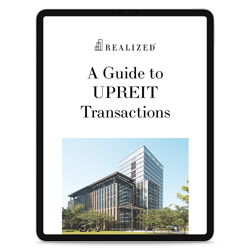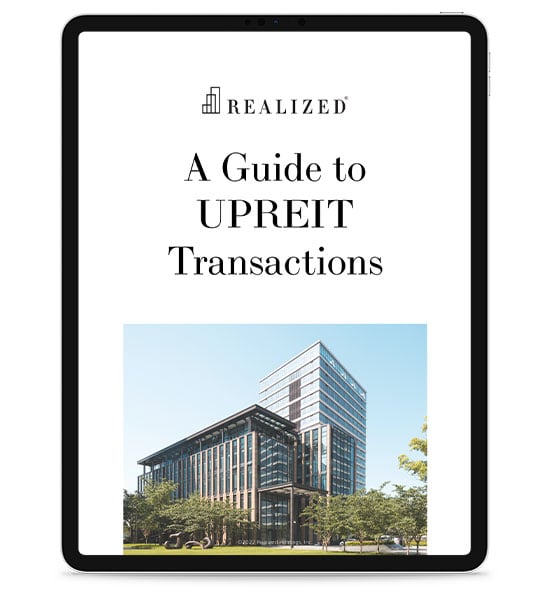
Umbrella Partnership Real Estate Investment Trusts (UPREITs) are a way to gain the passive income potential of a real estate investment by exchanging an appreciating property into a REIT in return for units in the trust instead of selling it outright.
Generally, UPREIT’s can have competitive returns and allow investors to have passive income from a profitable property they no longer want in their ownership. The units held in an UPREIT can be traded for shares in the trust, which are usually publicly traded and so are similar to owning stock.
Equity REITs own, develop, and manage properties and distribute dividends to their shareholders. Their financials are analyzed somewhat like stocks but take into account different metrics specific to real estate like depreciation and amortization, and costs of operating real estate.
Here are few important terms to understand when evaluating an UPREIT:
Net Asset Value (NAV) is the estimated market value of the UPREIT that determines the share price of the trust. It is calculated by taking the asset value of the trust minus the value of its liabilities. To calculate the share value, the total NAV is divided by the total outstanding common shares. Evaluating the NAV can give more information about the health of the REIT than looking at assets alone.
Funds From Operation (FFO) is a better metric to evaluate the financial health of an UPREIT than earnings per share, which is not tailored to specifics of the real estate industry like depreciation. The FFO shows the actual cash value of the REIT and is calculated by adding depreciation, amortization, and losses on sales of assets to earnings and then subtracting any gains on sales of assets and any interest income.
Adjusted Funds From Operations (AFFO) is a measurement that offers a more accurate picture than the FFO alone because it considers the costs to operate the properties in the trust, like capital expenditures, maintenance, and repairs.
Like with any real estate investment opportunity, there are many factors to consider when looking at UPREITs and due diligence is essential. Let’s discuss a few more ways to evaluate an UPREIT.
EBITDA is the measurement of earnings before interest, taxes, depreciation, and amortization and is like net operating income. EBITDA to interest expense ratio is a way to measure the potential risk of a REIT and to assess its debts. REITs tend to have much more unsecured debt than is usually associated with real estate investments.
Credit rating uses several factors, including the EBITDA, and can be important when evaluating the overall outlook for how an UPREIT has performed in the past. It is a helpful measurement when assessing the debt of a REIT.
Cost of capital is similar to the required rate of return that an investor expects from their investment in a certain project. It is a useful finance tool that companies and investors use to make better decisions on how they allocate their money.
It is important to remember that each situation is different, and if you are considering an UPREIT you should consult with a qualified financial advisor.
This material is for general information and educational purposes only. Information is based on data gathered from what we believe are reliable sources. It is not guaranteed as to accuracy, does not purport to be complete and is not intended to be used as a primary basis for investment decisions.



